
Table of Contents
- China in the 4th century
- Western Medicine and FMT
- FMT revived in modern times
The numbers in parentheses in the text refer to the reference numbers at the bottom of the article.
China in the 1.4th century
The earliest surviving historical description of FMT (fecal microbiota transplantation) is found in a book on emergency medicine called Zhou Hou Bei Ji Fang, written by Ge Hong during the Jin Dynasty in 4th century China.
この本では、重症の下痢や食中毒、熱病、腸チフスなどの症状に対して、健康な人の便を「消化管経由で」与えるという記述がある。
黄色スープなどとして表現を和らげているものの、口から飲む場合には抵抗があったに違いないが、天秤にかけているのは命なのだ。背に腹は変えられない思いで飲んだのだろう。
We feel disgusted by excrement not only because it is human culture. The sensation is also a self-preservation instinct, since snot, drool, vomit, and feces may contain bacteria and viruses that can cause serious infections.
Since there was no way to know that microorganisms in stools were effective against diseases at that time, the FMT method must have started as a folk remedy that “worked when I tried it,” apart from any scientific technology or theory.
中国では、4世紀の記述の時点ではすでに他の医学者たちが一般的に行っていたようだから、歴史はもっと古いのかもしれない。
彼らは、他の動物たちが食糞するのを見て、アイディアを思いついたのだろうか。昔の人の理屈を飛び越える力には、驚嘆するばかりだ。
A similar description is found in the 16th century, also in a Chinese medical book. There is a paper (1) that describes the history of this area in great detail, and anyone interested should read it.
China was not the only culture that cured disease by ingesting stool.
During World War II, Nazi German soldiers discovered that Arab nomads cured dysentery by eating camel dung. Whenever the nomads had even the slightest bit of diarrhea, they would follow the camels and eat the freshly defecated feces (2, p. 208).
Science later proved that warm camel dung contained large amounts of Bacillus subtilis, a bacterium that destroyed viruses and bacteria in the intestines in a state of diarrhea (3).
These facts show that FMT is not the product of science and technology, but of folk medicine. Modern science is merely trying to elevate this method to a medical treatment that can be used in non-emergencies by making it safer and more effective.
2. Western medicine and FMT
The first time FMT appeared in Western medicine as a paper (4) was in 1958.
Doctors at the Denver Veterans Administration Hospital administered stool samples from healthy individuals anally to four patients suffering from a deadly form of diarrhea called pseudomembranous colitis. The disease is mostly what we now call Clostridioides difficile [C. difficile] enteritis. (formerly known as Clostridium difficile).
The results were remarkable: all four patients recovered rapidly.
医師たちはこの治療法を本格的な治験のステージに進めようとしたのだけれど、結局頓挫してしまった。
時代は抗生物質の天下である。1929年にアレクサンダー・フレミングがペニシリンを発見し、第二次世界大戦では多くの戦傷兵たちが抗生物質のおかげで致死的な感染症を免れた。
When Fleming was awarded the Nobel Prize in Physiology or Medicine in 1945 and antibiotics became available to the general public, they were also administered for non-fatal infections.
Bacteria are the enemy. And mankind has won the battle.
What people had at the time was such an aversion and exuberance for germs that the “dirty and dangerous” FMT, which contained large amounts of bacteria and viruses, was not widespread at all and was forgotten.
3. FMT revived in the modern age
その後の時代、FMTは長いあいだ日陰の治療法だった。
抗生物質が効かずに命が危ない場合に限って、最後の手段として細々と実施されているに過ぎなかった。この半世紀のあいだに、FMTの灯を絶やさずにつないでくれた医師たち(5,6)には感謝するしかない。
At the risk of being too forward, one of the founders of our affiliate, the Intestinal Flora Transplant Clinical Research Foundation, a clinical laboratory technician, has been performing FMT in Japan for about 40 years with the cooperation of physicians and has worked hard to improve the methodology.
As a result, he has succeeded in developing a more effective method of implementation called NanoGAS® FMT.
In the 2000s, C. difficile enteritis (CDI) became a serious social problem in the United States. Due to overuse of antibiotics and other factors, only one type of bacteria overruns the intestinal ecosystem, resulting in severe diarrhea, weight loss, and in the worst cases, death.
In the United States alone, 500,000 people are affected each year and 30,000 die (7).
The treatment began to gain attention as some physicians, aware of the dramatic effects of FMT on this disease, began to perform it on an increasing number of their patients as a last resort.
The timing was good, as the importance of symbiotic microorganisms such as commensal bacteria was just beginning to be recognized with the launch of the Human Microbiome Project.
In 2012, Hamilton et al. (8) from the United States showed similar efficacy in frozen feces, and in 2013, van Nood et al. (9) from the Netherlands demonstrated the efficacy of FMT in a randomized controlled trial for recurrent CDI.
This randomized controlled trial was an important accomplishment that made a major leap forward in moving FMT therapies from the position of folk medicine to that of modern science-based medicine.
It was proven that FMT did not work by chance or placebo effect, on the contrary, it worked so well that it became unethical to conduct any more comparative studies, and the study was terminated with the results of the first 43 patients out of the planned 120 patients. The study was terminated after the results of the first 43 patients out of 120 planned.
Because the cure rate for FMT was 94% and the standard of care ranged from 23% to 31%, the medical safety committee, the supervising body, agreed to stop the trial and make FMT the new standard of care.
Thus, FMT was welcomed into modern medicine with its overwhelming effectiveness, without any specific mechanism being elucidated.
Nevertheless, many challenges still remain.
How should safety be ensured?
What are the criteria for donor selection?
Are there other indications for the disease?
Could this be done in a more convenient way?
And it is also of interest to researchers to elucidate why and how this method works.
*Click here for an article with links to articles about FMT.
1. Zhang F, Cui B, He X, Nie Y, Wu K, Fan D. Microbiota transplantation: concept, methodology and strategy for its modernization. Protein Cell. 2018;9(5):462-473. doi:10.1007/s13238-018-0541-8
2. Rob Desalle, Perkins Susan L. The World of the Microbiome–Trillions of Microbes in, on, and around You. Kinokuniya Publishing Co.; 2016.
3. Damman CJ, Miller SI, Surawicz CM, Zisman TL. The microbiome and inflammatory bowel disease: is there a therapeutic role for fecal microbiota transplantation? Am J Gastroenterol. 2012;107(10):1452-1459. doi:10.1038/ajg.2012.93
4. Eiseman B, Silen W, Bascom GS, Kauvar AJ. Fecal enema as an adjunct in the treatment of pseudomembranous enterocolitis. Surgery. 1958;44(5):854-859.
5. Bennet JD, Brinkman M. Treatment of ulcerative colitis by implantation of normal colonic flora. Lancet Lond Engl. 1989;1(8630):164. doi:10.1016/s0140-6736(89)91183-5
6. Borody TJ, George L, Andrews P, et al. Bowel-flora alteration: a potential cure for inflammatory bowel disease and irritable bowel syndrome? Med J Aust. 1989;150(10):604. doi:10.5694/j.1326-5377.1989.tb136704.x
7. Feuerstadt P, Theriault N, Tillotson G. The burden of CDI in the United States: a multifactorial challenge. BMC Infect Dis. 2023;23(1):132. doi:10.1186/s12879-023-08096-0
8. Hamilton MJ, Weingarden AR, Sadowsky MJ, Khoruts A. Standardized frozen preparation for transplantation of fecal microbiota for recurrent Clostridium difficile infection. Am J Gastroenterol. 2012;107(5):761-767. doi:10.1038/ajg.2011.482
9. van Nood Els, Vrieze Anne, Nieuwdorp Max, et al. Duodenal Infusion of Donor Feces for Recurrent Clostridium difficile. N Engl J Med. 2013;368(5):407-415. doi:10.1056/NEJMoa1205037
本ブログ記事は、
シンバイオシス株式会社微生物事業部の研究員が
noteにて作成した記事を一部変更しております。
The original post can be found here.
Article Title: History of FMT: Other People’s Poop Can Help with Diarrhea
Article Link:https://note.com/symbiosis17/n/ndebdc458c688

発酵食品を食べると、体調がいい。
そういうお声はよく聞きます。発酵が終わっているので、消化器への負担も少なくて済むのだとか。
Today we received a reader’s question regarding yogurt.
質の良いヨーグルトを毎日食べるようになり、汗臭さを感じなくなりました。(汗の中の雑菌どこいった?)
ヨーグルトを食べているときは肌がモチモチします。何故でしょう?
Mr. C.
Thank you for your question.
I will answer loosely and not too rigidly today.
Table of Contents
- Yogurt and sweat odor
- Yogurt and beautiful skin
- Yogurt and Bacteria
- Yogurt bacteria do not live in the intestines Problem
- It doesn’t matter if you don’t inhabit it.
- The relationship between the Japanese and yogurt
- Call for Questions
Yogurt and sweat odor
I see that yogurt has reduced the smell of sweat. I am very envious.
I often say to my sister, “It smells like a gymnast’s club room. I think it might be arousal. Kim Taku had armpit cancer, too, and it seems it can be easily cured with surgery,” and she would recommend surgery from afar.
We live apart now, but when we see each other and hug, we hug with our armpits tightened (not very effective, apparently). (I hear it doesn’t work so well.)
では、私もヨーグルトを食べればいいんでしょうか?
残念ながら、数年前まで1日600gほど無糖ヨーグルトを食べていましたが、脇臭はピンピンしています。(その後自分の中でブームが去り、現在3日で1パックぐらい食べる)
Now, why does sweat smell?
You wrote in your question, “Where are the germs in the sweat?” but in fact, the sweat itself is almost odorless.
There are two types of sweat glands, of which apocrine glands, which are abundant in the armpits and other parts of the body, produce a mixture of lipids, proteins, carbohydrates, and ammonia, which produce odor when they are broken down by bacteria. (1)
The other type, eccrine glands, are sweat glands located throughout the body. From here, water and salt-based sweat is produced. This is why sweat from the neck and arms is less smelly.
So it seems possible that by changing what we eat, we can change the ingredients that appear in our sweat and thus prevent the bacteria from producing too many smelly ingredients.
ただ、効果が出るかどうかは人それぞれっぽい。質の良いヨーグルトってのが肝なんやろか。
私は「その時スーパーで安いやつ」を食べてただけなんで。
Yogurt and beautiful skin
Yogurt and chewy beautiful skin.
That’s nice.
The only article I could find on this relationship was about yogurt makers, so I’ll leave the details to the next paragraph.
There is also a paper (2) that collected and analyzed papers on fermented foods and beautiful skin, but concluded that the number of studies was too small to be accurate.
However, there were lots of articles about how applying yogurt to the face makes the skin beautiful.
It’s a waste, but if you eat it after the pack, you kill two birds with one stone, right?
No, you don’t eat.
Yogurt and Bacteria
Now, there are many discourses about yogurt and health, and they are complex.
In this section, I will focus on the bacteria in yogurt in terms of their effect on intestinal bacteria.
In other words, we will consider “the possibility that the balance of intestinal bacteria has been improved by eating yogurt, resulting in reduced sweat odor and improved skin quality.
18世紀後半〜19世紀前半に活躍したロシアの微生物学者メチニコフは、ブルガリア人が長寿なのはヨーグルトのおかげだと信じ、毎日たっぷりヨーグルトを食べていました。
彼は71歳で心不全で亡くなりましたが、細菌にはエエ働きをする人たちもいると信じていました。(3)
残念ながら、その思想は1928年に抗菌薬(抗生物質)が誕生したことで一旦忘れられてしまうんですが…
In fact, there are quite a few studies showing that eating yogurt has changed the composition of intestinal bacteria.
Yogurt bacteria do not live in the intestines Problem
Have you ever seen a study showing that eating yogurt increases the ratio of lactobacilli and bifidobacteria among the intestinal bacteria in a person’s feces?
Yogurt makers are paying for this kind of research.
My poop did not increase those ratios at all, even in the days when I was eating 600 grams of yogurt a day, but some people certainly do.
Why?
That is because the yogurt they ate went into their stomach, into their intestines, and came out in the form of poop.
Bacteria killed by stomach acid can also be detected in the intestinal flora test (in the case of the 16S rRNA test).
Unlike the “zutto-friend” bacteria we acquired as infants and toddlers, the bacteria in yogurt are our one-summer love partners that we met during our summer vacation part-time jobs.
When you stop eating, the lactobacilli and bifidobacteria disappear.
When you stop working part-time, your summer romance ends.
That is what you meant when you said in your question “when I eat yogurt”.
It doesn’t matter if you don’t inhabit it.
Now, what’s the point if it doesn’t dwell?
That is not true.
食べたものに含まれる菌たちは、うんちとして出ていくまでにいろんな仕事をします。(彼らを通過菌と呼ぶ)
だいたいは胃酸で死んでしまいますが、彼らの死骸は他の腸内細菌たちのごちそうになります。
And some of the bacteria survive and reach the intestines, where they multiply and produce beneficial substances called “metabolites.
This metabolite may help you feel better.
ほな、代謝産物だけ食べたらいいんちゃう? という発想で作られているのがポストバイオティクスです。
たしかに理にはかなっています。
However, as mentioned above, not only the metabolites of yogurt bacteria are good, but also the metabolites produced by intestinal bacteria that eat their carcasses, so some people feel yogurt is more effective.
Incidentally, there are also a few fungi that take up residence by chance. This is the pattern of a one-summer romance that ends in a goal.
The relationship between the Japanese and yogurt
Nationality and race are important to note when considering the issue of intestinal bacteria.
When did Japanese people start eating yogurt?
It should be very recent.
Japan lost the war, so from the postwar period until now, Japan has been educated to consume wheat and dairy products under the U.S. initiative.
The speed of evolution of bacteria is so fast that perhaps yogurt bacteria may have already fit the Japanese constitution. (Yogurt is less likely to cause symptoms of lactose intolerance than cow’s milk.)
On the other hand, the Bacillus subtilis in natto, the lactic acid bacteria in pickles, and the yeast and lactic acid bacteria in miso may perhaps be more suitable for the body.
Try it if you like.
I’m not a huge fan of pickles, so I prefer yogurt.
Call for Questions
We invite questions from our readers!
Anything related to intestinal bacteria, or more broadly, microorganisms, scientific research, or the company!
Your question is from the X (formerly Twitter) account, which is run by another staff member, or from there,
From the comments section of NOTE!
Column] My armpits may be smelly! How to prevent armpit odor that bothers you right now. Rohto: Product information site. Accessed August 30, 2024. https://jp.rohto.com/learn-more/bodyguide/nioi/prevention/
2. R V, K S. Effects of Fermented Dairy Products on Skin: A Systematic Review. J Altern Complement Med. Published online July 2, 2015. doi:10.1089/acm.2014.0261
3. Mackowiak PA. Recycling Metchnikoff: Probiotics, the Intestinal Microbiome and the Quest for Long Life. Front Public Health. 2013;1:52. doi:10.3389/fpubh.2013.00052
This blog post is a partially modified version of an article written by a researcher in the Microbiology Division of Symbiosis, Inc. in NOTE.
The original post can be found here.
Article Title: Babies and the Microbiome: The Weight of the “First 1000 Days”
Article Link:https://note.com/symbiosis17/n/n003e46559b66

The expression “First 1000 Days” has great significance for the relationship between the human microbiome and the microbiome.
One thousand days is about three years after birth, and the microbiome ecosystem formed during this period is the basis for the face of the partners with whom they will share the rest of their long lives.
Where did these numbers come from?
*This article is part of the series “By What Age Are Intestinal Bacteria Determined? The Bacteria That Walk with You as You Grow from Baby to Child” (to be published at a later date) is part of a series.
It is recommended to read this article in conjunction with another series, “Pregnancy, Childbirth, and the Microbiome in a Nutshell for All Pre-Moms & Dads (focusing on gut and vaginal bacteria)” (to be released at a later date).
Table of Contents
- Are intestinal bacteria determined by the age of fat?
- Intestinal bacteria up to 1 year old
- The face of intestinal bacteria
- diversity
Are intestinal bacteria determined by the age of fat?
Maria Gloria Dominguez-Bello and Rob Knight, along with Jeffrey I. Gordon, a leading authority on modern microbiology, and colleagues, published a paper in 2012 that was the first to comprehensively show the relationship between the microbiome (here, gut bacteria) and age and region. Their findings.
They conducted a cohort study of people from three countries – the United States, indigenous peoples of Venezuela, and Malawi – and made some interesting findings.
そのなかのひとつが、腸内細菌の構成は3歳までに決まるというものだ。
もっともこの傾向はベネズエラとマラウイの人々により強く見られ、アメリカの子どもたちは1歳の時点ですでに大人と同じような腸内細菌の構成を持っていた。
もしかしたら、腸内細菌の成熟スピードには地域差があるのかもしれない。
Three years later, researchers beginning a Swedish cohort study (2,3) concluded that even at age 5 years, Swedish children still do not have the same level of intestinal bacterial maturation as adults.
Other controversial theories, such as the Danish four-year-old theory (4) and the American five-year-old and older theory (5), share a similar focus on the establishment of the symbiotic microbiome ecosystem during childhood and the impact of the microbiome during this period of rapid physical and mental development.
And needless to say, from the moment life enters the belly, the mother’s microbiome begins to change, transforming into a configuration suitable for nurturing the fetus in the belly, and even into a configuration that should be handed to the fetus at the moment of birth.
From the moment of conception through childhood, the microbiome seems to assist human development by flexibly building the best ecosystem for each moment.
Intestinal bacteria up to 1 year old
Humans are born in a more immature state than other animals.
In other words, they are in a very unstable state for some time after birth, while at the same time they are growing at a remarkable rate.
Babies who are born weighing approximately 3 kg generally gain an additional 1 kg at the one-month checkup, and by the time they reach three months, their weight doubles.
The child’s head begins to settle and, in the earliest stages, the child begins to turn over in bed.
If you have ever raised a child, you know how much a baby can learn to do in a year.
So, what kind of transition does the intestinal bacteria undergo until the age of 1 year?
There are still few large cohort studies of babies up to one year of age.
Nevertheless, the symbiotic pattern between babies and intestinal bacteria is gradually becoming clearer, especially in the Swedish research results mentioned above and the Chinese study (6).
The face of intestinal bacteria
The bacteria that live in the intestines of newborn babies are the main members of a group of bacteria known as the facultative anaerobes.
These bacteria, represented by Escherichia coli, Staphylococcus, and Streptococcus, can live with or without oxygen.
Soon thereafter, bacteria known as biophilic anaerobes, such as Bifidobacterium, Bacteroides, and Clostridium, will increase in number. They cannot survive in the presence of oxygen, but they are the majority in our human colon.
So, perhaps we can say this.
Newborn babies do not have a strong anaerobic environment in their colon like adults.
There, the bacteria that can live in the presence of oxygen consume it, turning the large intestine toward an anaerobic environment and making room for the biophilic anaerobic bacteria that should subsequently increase.
The intestinal bacteria are helping the immature baby’s colon to become what it should be.
diversity
The diversity of bacteria in the gut of individual babies (called alpha diversity) is lowest immediately after birth and continues to increase toward the age of one year.
Only selected bacteria are active at first to promote the baby’s growth and protect it from pathogens, and then they gradually welcome other bacteria into their lives.
菌たちが多様性を高めながら生態系をつくりあげていくさまは、柔軟で巧妙だ。初期に活躍する菌たちが次に棲みつく菌たちの環境を整え、ときには棲み着く菌を取捨選択していく。
そして、無事に生態系に含まれることになった菌たちは、別の菌の代謝物質などを利用しながら、相互に関連したネットワークを編み上げていくのだ。
On the other hand, the degree of difference (called beta diversity) when one baby is compared to another baby is greater when the baby is younger, and the individual differences become progressively smaller as the baby ages.
What can be said from this is that there is a great deal of individual variation in the early process by which babies acquire symbiotic bacteria.
Factors influencing this process may include delivery methods and regional differences, as we have already seen, as well as differences in nutritional sources, as we will see later in the article.
どんな菌たちがどのようなスピードで増えるのが理想的なのかはまだわかっていない。しかし、この初期の「個人差」が赤ちゃんの病気のかかりやすさや、その後の人生での疾患リスクにかかわっていそうだということが、少しずつ明らかになってきている。
What exactly do the germs do in the development of the baby?
In the next article, we will look at the function of bacteria from the perspective of function.

Our bodies multiply several times during the first few months of life.
And that sharp curve continues through adolescence, although it loosens somewhat.
My spiritual development is equally dynamic, but even at 33 years old, I still feel like I am growing spiritually.
The rapid increase in height comes to a halt after middle and high school, leaving only the possibility of lateral growth.
Cells in the skin, brain, and organs are also replaced daily, but their functions do not develop any further; rather, they gradually go downhill.
What about the gut bacteria and other microbiomes that live symbiotically in our bodies?
How will they “grow” and “function” alongside our growth?
How will the symbiotic microbiome inherited from the mother at birth support the health of babies and children?
And what could happen if the healthy symbiosis with the microbiome breaks down at an early age?
I would like to focus on the microbiome of babies and children over the next several issues.
This series is,
It is recommended that this series be read in conjunction with the “All About Pregnancy, Childbirth and the Microbiome (with a focus on gut and vaginal bacteria)” series for all pre-moms and dads.
*We plan to publish the “All Pregnancy, Childbirth and the Microbiome (with a focus on gut and vaginal bacteria) for all pre-moms and dads” series as needed.
Table of Contents
- Babies and the Microbiome “First 1000 Days” (the weight of the first 1000 days)
- The importance of the function of the baby’s intestinal bacteria and the importance of the dabbling function.
- Breast milk vs. formula from a bacterial perspective, and the rough and tumble of baby food
- Infants, and Children and the Microbiome
- The microbiome changes so much depending on which country you are born in.
- Do children gain weight when their intestinal bacteria are disrupted? The relationship between antibiotics and obesity
- Is intestinal bacteria disrupted because of malnutrition or vice versa? Learning from the gut of children in Bangladesh and Africa.
- Let’s build children’s immunity with microorganisms.
- Microbes are essential for children’s mental development
1. babies and the microbiome “First 1000 Days” (the first 1000 days) weight
It will be released as needed.
2. The functions performed by the baby’s intestinal bacteria and the importance of the dabbling function.
It will be released as needed.
3. Breast milk vs. formula from the viewpoint of bacteria, and the stormy wave of weaning food
It will be released as needed.
4. infants, and children and the microbiome
Even after the first years of life, when weaning enters its final stages, the microbiome is still in the process of development. They seem to be changing their face and function, helping the body and mind develop during infancy.
Exposure to an external environment teeming with microorganisms causes the microbiome ecosystem to develop rapidly. Like a summer cumulonimbus cloud.
New germs meet children every day.
The diversity of the microbiome given by the mother at birth never goes backwards.
Nevertheless, the microbiome ecosystem of children after the age of one is still in a precarious state.
In addition to breast milk and baby food, there are many other factors that influence the microbiome ecosystem of children.
A multitude of factors, including country of birth, food eaten, living environment, and hygiene, apparently influence the composition of children’s microbiomes and their function.
Just like the children themselves, who learn and absorb new things every day, there are countless microorganisms that knock on the door to join or not join their delicate microbiome ecosystem.
In the gut, in particular, microorganisms are selected for through their interactions with the immune system. Compared to the miscellaneous microbial communities in the environment, the decision to inhabit the human gut is subject to strong selection pressure.
How furniture and household items are arranged in a brand new house has a significant impact on the subsequent comfort of living in the house.
Similarly, which microbiome is welcomed into the gut early in life may have a bearing on the comfort of living later in life.
The more stable the ecosystem, i.e., the older and more established the microbiome, the harder it is for new species to take up residence.
This is why lactobacilli do not settle in the gut when adults eat yogurt. Some microbiomes can be modified by diet, but we’ll leave that discussion for another time.
On the other hand, factors that disturb small ecosystems are everywhere.
What consequences does a disrupted microbiome leave behind for our children, from childhood antibiotics, poor nutritional diets, lack of sleep, and excessive sterilization, just to name a few?
5. The microbiome changes so much depending on which country you are born in.
It will be released as needed.
6. Do children gain weight when their intestinal bacteria are disturbed? Relationship between Antibiotics and Obesity
It will be released as needed.
7. Is intestinal bacteria disrupted because of malnutrition or vice versa? Learning from the gut of children in Bangladesh and Africa.
It will be released as needed.
8. Let’s build children’s immunity with microorganisms.
It will be released as needed.
9. Microorganisms are essential for children’s mental development
It will be released as needed.

Is it just me or does it seem like there are so many review papers lately…
Well, I am very grateful to you for compiling them.
I also get the impression that people in the nutrition field are becoming quite interested in the microbiome.
I would like to see modern nutritional science updated, such as calories and how to divide them into “carbohydrates, fats, and proteins”, as they are becoming quite outdated.
With genomic analysis technology readily available, the number of publications on the invisible microbiome, or gut bacteria, has increased exponentially over the past decade or so.
Here we regularly present articles collected from PubMed using keywords such as ‘gut microbiome’ ‘FMT’.
On the one hand, it is dangerous to rely on new papers, as they have not yet been evaluated, and on the other hand, they give us access to the forefront of research.
We encourage you to read the main points that interest you, even if only to the point!
Table of Contents
- Resistant starch and the gut microbiome: beneficial interrelationships and dietary shadows.
- Effects of probiotics, prebiotics, synbiotics, and fermented food supplements in psychiatric disorders: a summary of clinical studies
- Fermented Foods: Approaching the Potential to Regulate Mental Health through the Gut Microbiome and Brain-Gut Correlation
- Nutrition in pregnancy: the gut microbiome and its impact on fetal development
- A comprehensive review of the effects of iron deficiency anemia on the gut microbiome and gut wall
- FMT (fecal microbiota transplantation)]
(1) Relationship between Parkinson’s disease, constipation, microorganisms, and microbial therapy
(2) Role of FMT in the treatment of hepatic encephalopathy: Current trends and future directions
(3) Gut-targeted therapy for type II diabetes: a review
(4) FMT alleviates intestinal inflammatory diarrhea caused by oxidative stress and pyrotosis by reducing LPS derived from intestinal bacteria.
1. resident starch and the gut microbiome: beneficial interrelationships and dietary influences
https://www.sciencedirect.com/science/article/pii/S2590157524000051?via%3Dihub
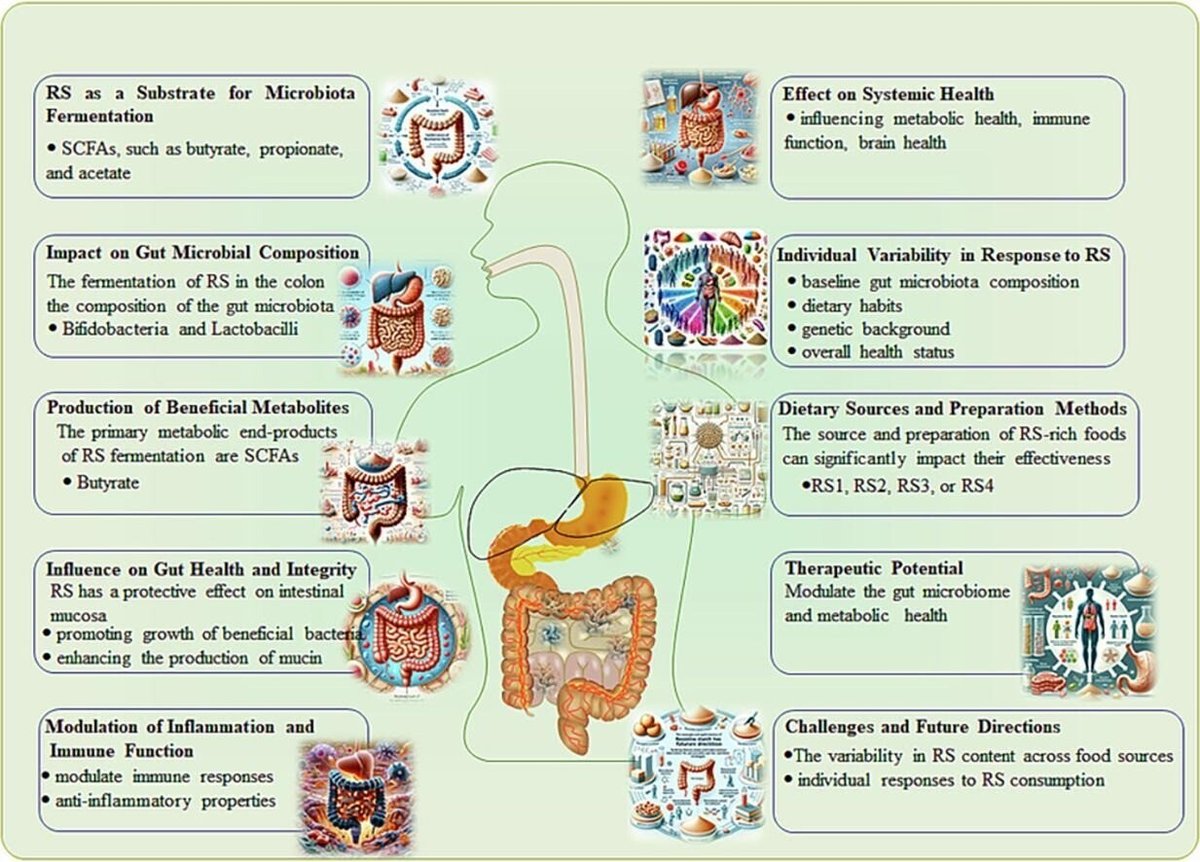
[Review Article]
Resistant starch and the gut microbiome: Exploring beneficial interactions and dietary impacts
(タイトル訳)Resistant starch and the gut microbiome: Exploring beneficial interactions and dietary impacts
(概要)This review article summarizes how resistant starch affects health through the gut microbiome. In particular, the paper focuses on the process of fermentation of resistant starch in the gut with the help of the microbiome to produce volatile fatty acids such as butyric acid, acetic acid, and propionic acid.
The paper also focuses on the effects of consuming foods high in resistant starch on gut health and other metabolic effects.
(著者)Zhao Chen et al.
Institute of Basic Research in Clinical Medicine, China Academy of Chinese Medical Sciences, Beijing, China
(雑誌名・出版社名)X ELSEVIER
(出版日時)30 March 2024
(コメント)Resistant starch can be found in whole grains and seeds (type 1), raw foods (type 2), cooked and cooled potatoes and pasta (type 3), and artificially produced (type 4). The effects of each type of food should be verified.
2. influence of probiotics, prebiotics, synbiotics, and fermented food supplements in psychiatric disorders: summary of clinical studies
https://www.sciencedirect.com/science/article/pii/S0149763424000290?via%3Dihub
[Review Article]
(タイトル)Probiotic, prebiotic, synbiotic and fermented food supplementation in psychiatric disorders: A systematic review of clinical trials
(Title) Resistant starch and the gut microbiome: Exploring beneficial interactions and dietary impacts
(Resistant starch and the gut microbiome: Exploring beneficial interactions and dietary impacts
(Abstract: This review article summarizes how resistant starch affects health through the gut microbiome. In particular, the paper focuses on the process of fermentation of resistant starch in the gut with the help of the microbiome to produce volatile fatty acids such as butyric acid, acetic acid, and propionic acid.
The paper also focuses on the effects of consuming foods high in resistant starch on gut health and other metabolic effects.
(Authors) Zhao Chen et al.
Institute of Basic Research in Clinical Medicine, China Academy of Chinese Medical Sciences, Beijing, China
(Food Chemistry: X ELSEVIER
(Date of Publication) 30 March 2024
(Comment) Resistant starch can be found in whole grains and seeds (type 1), raw foods (type 2), cooked and cooled potatoes and pasta (type 3), and artificially produced (type 4). The effects of each type of food should be verified.(タイトル訳)精神系疾患におけるプロバイオティクス、プレバイオティクス、シンバイオティクス、発酵食品のサプリメントの影響:臨床研究まとめ
(概要)Effects of probiotics, prebiotics, synbiotics, and fermented food supplements in psychiatric disorders: a summary of clinical studies
(著者)Carlos Ribera
Department of Psychiatry, Hospital Clínico Universitario de Valencia, Department of Psychiatry, Blasco Ibañez 17, floor 7B, 46010 Valencia, Spain
(雑誌名・出版社名)Neuroscience Biobehavioral Reviews ELSEVIER
(出版日時)March 2024
(コメント)Surprised that a term has been coined for psychobiotics (live bacteria that, when taken in appropriate amounts, may provide mental health benefits by affecting the microflora of the host organism).
3. fermented foods: a look at their potential to regulate mental health through the gut microbiome and brain-gut correlation
https://www.sciencedirect.com/science/article/pii/S0149763424000307?via%3Dihub#ab0015
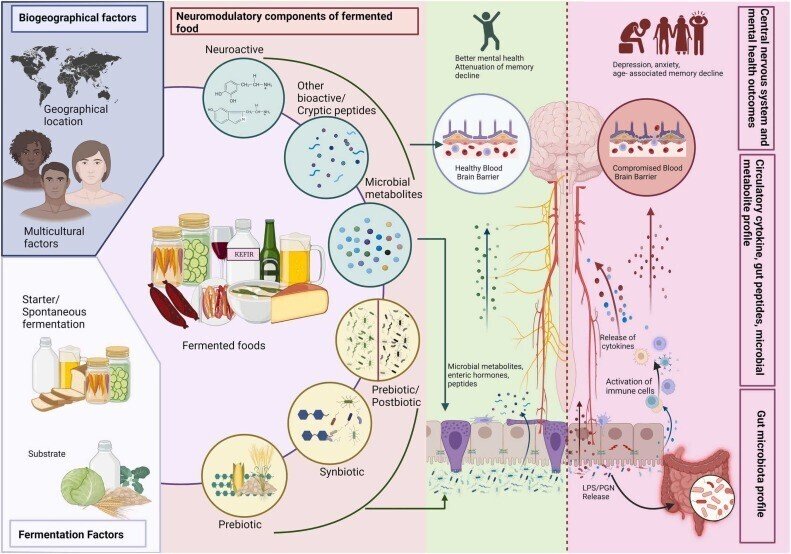
[Review Article]
(タイトル)Fermented foods: Harnessing their potential to modulate the microbiota-gut-brain axis for mental health
(タイトル訳)Harnessing their potential to modulate the microbiota-gut-brain axis for mental health
(概要) Harnessing their potential to modulate the microbiota-gut-brain axis for mental health
(著者) Ramya Balasubramanian et al.
APC Microbiome Ireland, University College Cork, Cork, Ireland
(雑誌名・出版社名)Neuroscience Biobehavioral Reviews ELSEVIER
(出版日時)March 2024
(コメント)Similar to the study above, but this one focuses on fermented foods as foods.
4. nutrition in pregnancy: the gut microbiome and its impact on fetal development
https://onlinelibrary.wiley.com/doi/10.1111/aji.13802
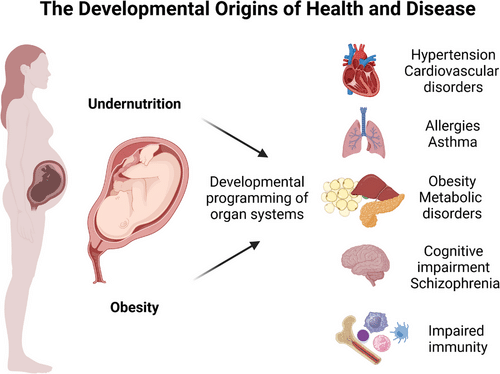
[Review Article]
(タイトル)Nutrition during pregnancy: Influence on the gut microbiome and fetal development
(タイトル訳)妊娠中の栄養:腸マイクロバイオームと胎児の発達への影響
(概要)Based on the fact that nutritional status during the fetal period is significantly related to the long-term health status of the individual, the study reviews what impact diet during pregnancy has on the gut microbiome and metabolism of the mother.
(著者)Gabriela Barrientosら
Laboratory of Experimental Medicine, Hospital Alemán, Buenos Aires, Argentina
(雑誌名・出版社名)AJRI(willy online library)
(出版日時)11 December 2023
(コメント)
See also the NOTE article below
A complete summary of pregnancy, childbirth and the microbiome (with a focus on gut and vaginal bacteria) for all pre-moms and dads.
About the “Developmental Origins of Health and Disease Hypothesis” in the summary
The Developmental Origins of Health and Disease (DOHaD) Hypothesis is the concept that exposure of developing fetuses, newborns (up to 28 days old) and infants (less than one year old) to poor nutrition affects their health and susceptibility to disease in adulthood. This concept is based on the idea that exposure to low nutrition in the developing fetus, newborns (up to 28 days of age), and infants (less than one year of age) affects their health and susceptibility to disease in adulthood.
5. a comprehensive review of the effects of iron deficiency anemia on the gut microbiome and gut wall
https://www.sciencedirect.com/science/article/pii/S2319417024000040?via%3Dihub#abs0010
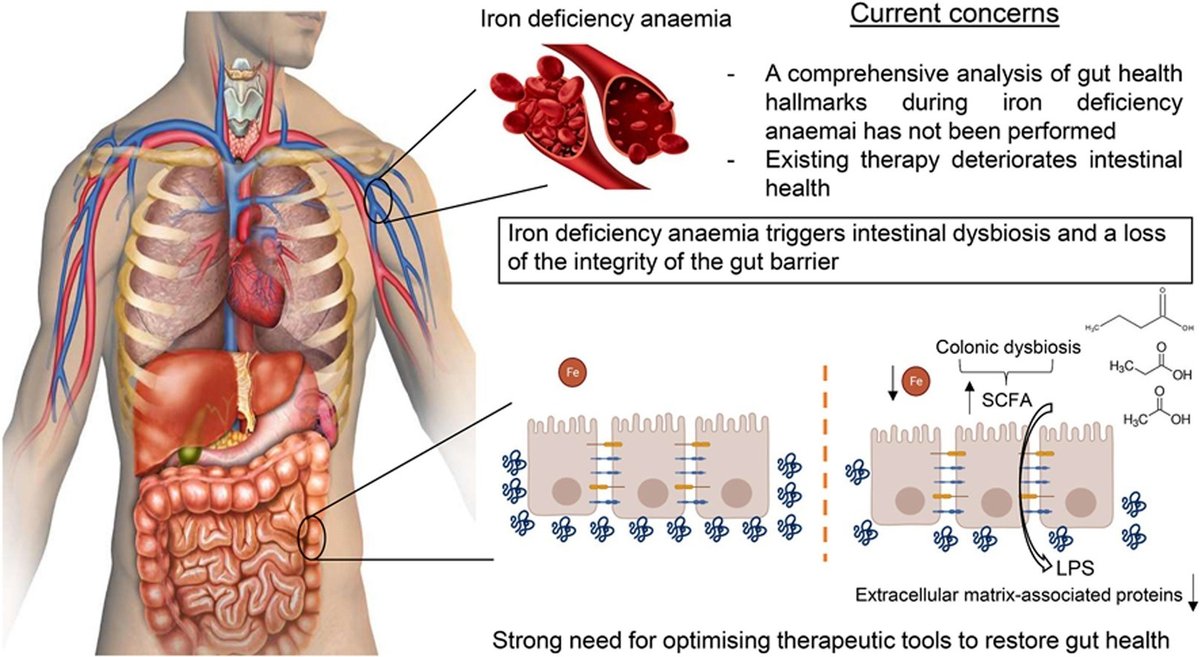
[Regular Article]
(タイトル)Comprehensive insight into the alterations in the gut microbiome and the intestinal barrier as a consequence of iron deficiency anaemia
(タイトル訳)A comprehensive review of the effects of iron deficiency anemia on the gut microbiome and gut wall
(概要)The first comprehensive analysis of the effects of iron deficiency anemia (IDA) on the gut microbiome and gut wall, using a rat model of IDA, found that IDA increased Clostridium species in the gut microbiome and made the gut wall more brittle.
They also found an increase in blood LPS and increased immunity.
Suggests that imbalances in the gut microbiome and recovery of the gut wall should be considered during IDA treatment.
(著者)Ana Soriano-Lerma
Department of Physiology (Faculty of Pharmacy, Campus Universitario de Cartuja), Institute of Nutrition and Food Technology “José Mataix Verdú”, University of Granada, E-18071, Granada, Spain
(雑誌名・出版社名)Biomedical Journal
(出版日時)26 January 2024
(コメント)They are measuring the numbers from various angles, and it’s costing money.
6.[FMT (fecal microbiota transplantation)
(1) Relationship between Parkinson’s disease, constipation, microorganisms, and microbiological treatment
https://www.ncbi.nlm.nih.gov/pmc/articles/PMC10835526
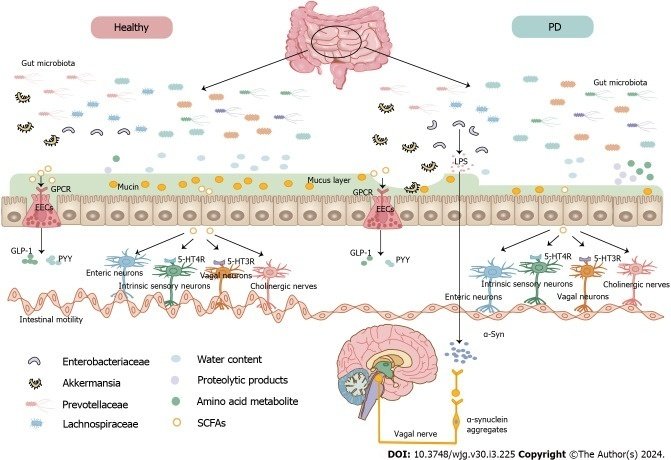
[Review Article]
(タイトル)Relationship among Parkinson’s disease, constipation, microbes, and microbiological therapy
(タイトル訳)Relationship among Parkinson’s disease, constipation, microbes, and microbiological therapy
(概要)Increased levels of Proteobacteriaceae and Bacteroidetes have been reported to be associated with constipation in patients with Parkinson’s disease. This review examines the potential of microbiological approaches such as prebiotics, probiotics, and FMT.
(著者)Xin-Yang Yuan et al.
Department of Neurology, Affiliated Hospital of Guangdong Medical University, Zhanjiang 524000, Guangdong Province, China
(雑誌名・出版社名)World J Gastroenterol
(出版日時) 2024 Jan 21
(2) Role of FMT in the treatment of hepatic encephalopathy: recent trends and future directions
https://www.ncbi.nlm.nih.gov/pmc/articles/PMC10835490
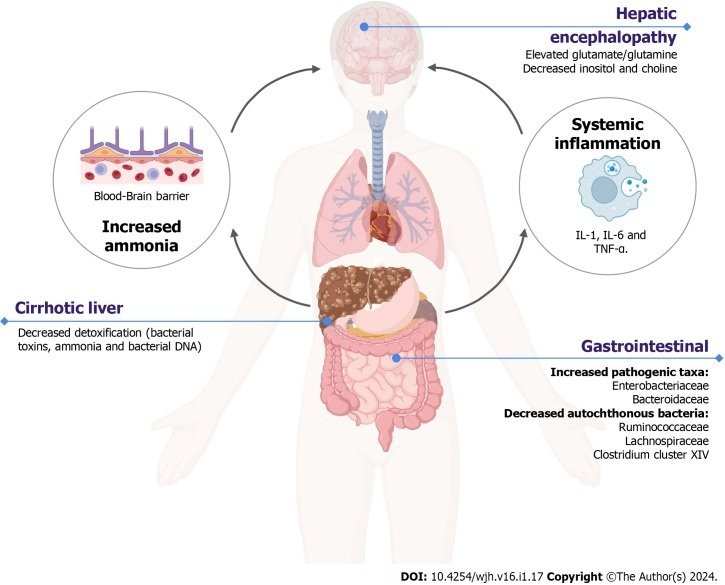
[Review Article]
2024 Jan 27(タイトル)Role of fecal microbiota transplant in the management of hepatic encephalopathy: Current trends and future directions
(タイトル訳)Role of fecal microbiota transplantation in management of hepatic encephalopathy: Current trends and future directions
(概要)The causes of hepatic encephalopathy are related to ammonia intoxication, inhibition of brain-gut communication, and inflammation, and FMT may provide an approach to these factors FMT has also shown effects on alcoholic, hepatitis B and C, and non-alcoholic fatty liver, and has helped to improve liver function and cognitive function FMT has also been shown to improve liver function and cognition.
Furthermore, in hepatic encephalopathy, the FMT group is promising in that it has fewer adverse events and improved cognition compared to standard therapy. However, there are still many issues to be addressed, and larger trials are needed.
(著者)Yash R Shah
Department of Internal Medicine, Trinity Health Oakland/Wayne State University, Pontiac, MI 48341, United States
(雑誌名・出版社名)World J Hepatology
(出版日時)2024 Jan 27
(3) Gut-targeted therapy for type II diabetes: a review
https://www.ncbi.nlm.nih.gov/pmc/articles/PMC10824172
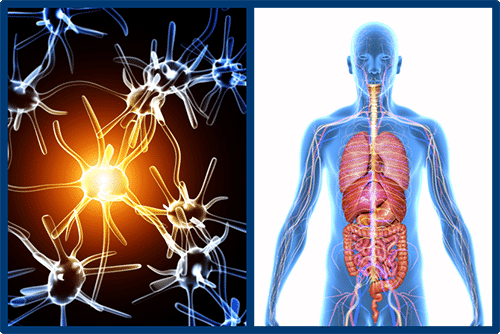
[Review Article]
(タイトル)Gut-targeted therapies for type 2 diabetes mellitus: A review
(タイトル訳)Gut-targeted therapy for type II diabetes: a review
(概要)Three approaches to the increasing incidence of type II diabetes are reviewed: probiotics, FMT, and electrotherapy (NIH SPARC program).
Electrotherapy, in particular, uses electrical stimulation to activate peripheral nerves and organs and aims to activate the vagus nerve, which is important for glucose metabolism.
(著者)Tian-Cheng Xu
Key Laboratory of Acupuncture and Medicine Research of Ministry of Education, Nanjing University of Chinese Medicine, Nanjing 210023, Jiangsu Province, China
(雑誌名・出版社名)World Journal of Clinical Cases
(出版日時)2024 Jan 6
(Comment.)The NIH SPARC program is a U.S. National Institutes of Health program that aims to treat various diseases using electrical stimulation.https://commonfund.nih.gov/sparc
(4) FMT alleviates intestinal inflammatory diarrhea caused by oxidative stress and pyrotosis by reducing LPS derived from intestinal bacteria.
https://www.sciencedirect.com/science/article/abs/pii/S0141813024004999?via%3Dihub
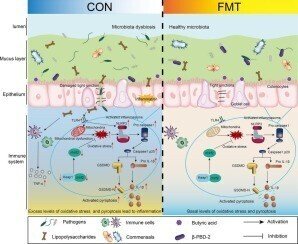
[Regular Article]
(タイトル)
(Title translated)FMT alleviates intestinal inflammatory diarrhea caused by oxidative stress and pyrotosis by reducing LPS derived from intestinal bacteria.
*Pyrotosis is a type of cell lysis associated with an inflammatory response
(概要)FMT was performed on piglets with diarrhea caused by stress from early weaning.
FMT lowered LPS levels due to dysbiosis and also reduced oxidative stress.
It also alleviated intestinal inflammation and pyrotosis.
(著者)Mengqi Liu
College of Animal Science and Technology, Henan Agricultural University, Zhengzhou, China
(雑誌名・出版社名)International Journal of Biological Macromolecules(ELSEVIER)
(出版日時)March 2024
(コメント)Tests on diarrhea in infants are difficult to conduct for ethical reasons, so tests using mammals that are similar to humans are valid.














